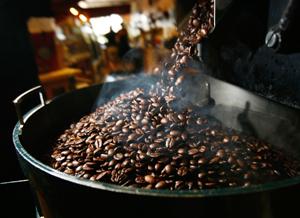Too much coffee leads to caffeine overload, addictive qualities make harmful substance
February 12, 2013
Caffeine overload is that familiar moment when a cup of coffee — perhaps just the last sip — was one too many. A fluid motion of warm tingles transitions to nervous jitters, then rapidly moves to the fingertips as the eyes widen. In this moment, energy and alertness are amplified into an overwhelming, jaw-clenching spasm that limits the ability to sit still and awakens the desire to run around the library like a maniac.
Before college, besides the occasional chai tea latte or frappuccino, no part of me desired a cup of black coffee. Who needs that? And what is with those people who claim they are addicted to caffeine, yet still unconcernedly drink it?
In college, drinking a caffeinated beverage is the obvious thing to do. One coffee date here, another coffee outing there, two shots of a 5-hour Energy drink and, soon enough, traces of caffeine coursing through the bloodstream leave a longing for — in my case — a sweet soy latte.
The current rate of consumption of caffeine has grown from an already high 80 percent of the North American population in the 1980s. Now, 90 percent of the continent consumes it on a daily basis, making caffeine the most widely used psychoactive substance in the world. That is a lot of java. Ten billion energy drinks were consumed by the U.S. in 2010 and sales reached as high as 9 billion dollars in 2011, proving that caffeine is indeed in high demand.
The use of this exhilarating stimulant has been debated for decades. The question of its effects goes back to 1,000 years ago, when people would actually chew on the seeds and leaves of plants containing caffeine. This may not sound as appetizing as a steamy mocha latte, but the caffeine provided them with the same end result. Today, cooked down into a drinkable form, the caffeine from these plants allows for enhanced concentration and a greater capacity for physical labor.
Acting as a mild central-nervous-system stimulant, the caffeine moves from the stomach into the bloodstream. A boost in mental alertness begins approximately 15 minutes after the first tasty sip. Increases in heart rate and blood pressure, a relaxation of the smooth muscle cells in the airway and a release of fatty acids and glycerol for energy are all physical reactions to the caffeine. These effects provide the extra jolt needed to do a hard workout or study for a final into the night, masking the perception of fatigue. Not only does caffeine come in tasty packages, it is also a source of motivation when the rest of our body is saying it is nap time.
But the question remains: What makes caffeine bad? Although there are proven beneficial effects of caffeine consumption, there are a variety of issues that accompany excess caffeine use. Moderate daily consumption ranges between 300 and 400 mg with a recommended ceiling of 500 mg per day, according to a 2012 Pitt medical journal.
The caffeine content of different beverages and foods varies depending on the plant source, location of where it is grown and how it is prepared. For example, a typical eight-ounce cup of coffee has anywhere from 95 to 200 mg while a cup of green tea has about 15 mg. A diet Coke has 47 mg of caffeine, and a 1.5-ounce piece of dark chocolate — my favorite — has 31 mg, in comparison to milk chocolate, which has 9 mg.
An individual’s physical characteristics also come into play. Whether a person is overweight or underweight, elderly or young, on medications or has a history of anxiety disorders, there are differences in sensitivities to caffeine. Although the effects of caffeine are temporary, it can cause restlessness, irritability, nervousness, anxiety, headaches and a racing heart when ingested in large doses.
Many drink caffeinated beverages without being aware of the actual amount they are consuming. As caffeine content increases in a person’s diet, tolerances develop rapidly along with mild physical and psychological dependencies. You may recall a time when you either gave up coffee for a few days or went without an extra can of Monster and then cursed at the hammer that pounded within your head. Headaches, slight depression and fatigue are withdrawal symptoms of caffeine.
My advice as a fellow coffee and tea drinker is to weigh out the pros and cons. Develop an awareness of how your body reacts to caffeine and develop a healthy consumption of the stimulant. Stay attentive to the amount of caffeine you consume and start to level it to the moderate recommended amount.
You can still enjoy that mocha java or Red Bull on occasion, but leave the caffeine overload shakes behind.







